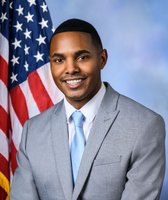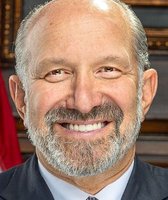Stand up for the facts!
Our only agenda is to publish the truth so you can be an informed participant in democracy.
We need your help.
I would like to contribute
Make no mistake about it, Social Security is deeply intertwined with the fabric of America’s well-being.
Its checks to retirees and the disabled, plus their families, help over 63 million people pay the bills. Without it, about a third of elderly Americans would live in poverty, and nearly 25 million count on it for at least half their income.
But the $1 trillion-a-year program faces some daunting math.
As more people retire, there are fewer workers paying in to cover the cost of the money going out.
Sign up for PolitiFact texts
Social Security has roughly $2.9 trillion in its combined trust funds. If nothing changes, those reserves will run out by about 2035. The program will continue to pay benefits, but without additional taxpayer dollars, it could only afford to pay between 70% and 80% of the benefits people expected.
What to do?
The main takeaway from any assessment of the challenge is that the sooner changes are made, the easier it will be for people and businesses to adapt. On the flip side, the longer a solution is put off, the harder it will be when the final reckoning comes.
Social Security is like a forest pond with a stream flowing in at one end and water flowing out the other. If the pond is shrinking, there are only three ways to save it: increase the amount coming in (higher taxes), reduce the amount going out (cut some benefits), or count on rain from above to fill the pond (get a higher return on money in the trust funds today).
The Social Security Administration compiled a list of legislative ideas that would extend the life of the trust funds.
By and large, the bills in Congress now rely on option No.1 –– raising taxes to pay for future benefits. The number crunchers at Social Security estimated how much longer the trust funds would last under the different proposals.
The government’s maximum time frame is 75 years, or 2093, and one bill achieved that. The package from Sens. Richard Blumenthal, D-Conn., and Chris Van Hollen, D-Md., and Rep. John Larson, D-Conn., would gradually raise the current combined employer-employee payroll tax of 12.4% to 14.8% by 2043. The rate would go up one-tenth of a percent each year.
Their package also changes the rule for high earners. They would apply the payroll tax to earnings over $400,000. Today, the maximum taxable amount is just shy of $133,000.
The specifics vary, but other bills extend the solvency of the trust funds by making similar changes — raising the payroll tax for everyone and applying the tax for the first time to earnings above a certain level.
Sen. Bernie Sanders, I-Vt., co-sponsored a plan with Rep. Peter DeFazio, D-Ore., that would stretch the life of the trust funds to 2071. It would apply payroll taxes to income over $250,000 and levy a new 6.2% tax on investment income for couples making over $250,000 a year.
The Trump administration has said little about the retirement side of Social Security, but it has put forward changes in how it runs the program for the disabled. The goal is to more quickly spot people who have become healthy enough to go back to work.
Advocates say the changes could remove hundreds of thousands of vulnerable people from the rolls.
What the Democratic presidential candidates say
In addition to his bill, Sanders has announced plans for the program in his Democratic presidential campaign. He would give the very poorest seniors, those making less than $16,000, an additional $1,300 a year. And he would increase the minimum benefit paid to low-income workers.
Sen. Elizabeth Warren, D-Mass., would give every recipient an additional $2,400 a year and pay for it by raising taxes on the wealthy. Wages above $250,000 would be subject to a 14.8% tax, and the same rate would apply to a new net investment tax that would fall on individuals making over $250,000 or families making over $400,000.
Joe Biden would increase the minimum benefit for lifelong workers and make payments for the oldest people more generous. He would raise taxes on upper income households, although his plans doesn’t say by how much.
Pete Buttigieg would offer a minimum benefit of 125% of the federal poverty line to those who have worked at least 30 years. He would apply Social Security taxes starting at income over $250,000 for an individual or $500,000 for a couple. Buttigieg would also establish a public investment plan (a form of 401K) to help people save for retirement.
Sen. Amy Klobuchar, D-Minn., would also impose a Social Security tax on earnings over $250,000.
Our Sources
U.S. Social Security Administration, Proposals to change Social Security, 2019
U.S. Social Security Administration, Covered Workers And Beneficiaries, 2019
U.S. Social Security Administration, Combined OASI and DI balance 2018-2093, 2019
U.S. Social Security Administration, Social Security Program Fact Sheet, June 30, 2019
U.S. Social Security Administration, Estimates of Individual Changes Modifying Social Security, 2019
U.S. Social Security Administration, OASDI and SSI Program Rates & Limits, 2019, October 2018
Center on Budget and Policy Priorities, Top Ten Facts about Social Security, Aug. 14, 2019
U.S. Census Bureau, The Population 65 Years and Older in the United States: 2016, October 2018
Social Security Administration, Replacement rates for hypothetical retired workers, June 2018
Federal Register, Rules Regarding the Frequency and Notice of Continuing Disability Reviews, Nov. 18, 2019
National Bureau of Economic Research, The Poverty Reduction of Social Security and Means-Tested Transfers, May 2018
USA Today, Americans' reliance on Social Security is near a record high, survey shows, June 29, 2019
Gallup, Social Security, April 2019
Brookings Institution, Social Security is drying up. This plan could save it, May 3, 2019
Bipartisan Policy Center, Report of the Commission on Retirement Security and Personal Savings, June 2016
Social Security Administration, Gwen Moore - Social Security Enhancement and Protection Act of 2019, Dec. 11, 2019
Social Security Administration, Larson, Blumenthal, Van Hollen - Social Security 2100 Act, Sept. 18, 2019
Social Security Administration, Deutch, Hirono - "Protecting and Preserving Social Security Act,, April 10, 2019
Social Security Administration, Sanders, DeFazio - "Social Security Expansion Act, Feb. 13, 2019






















































